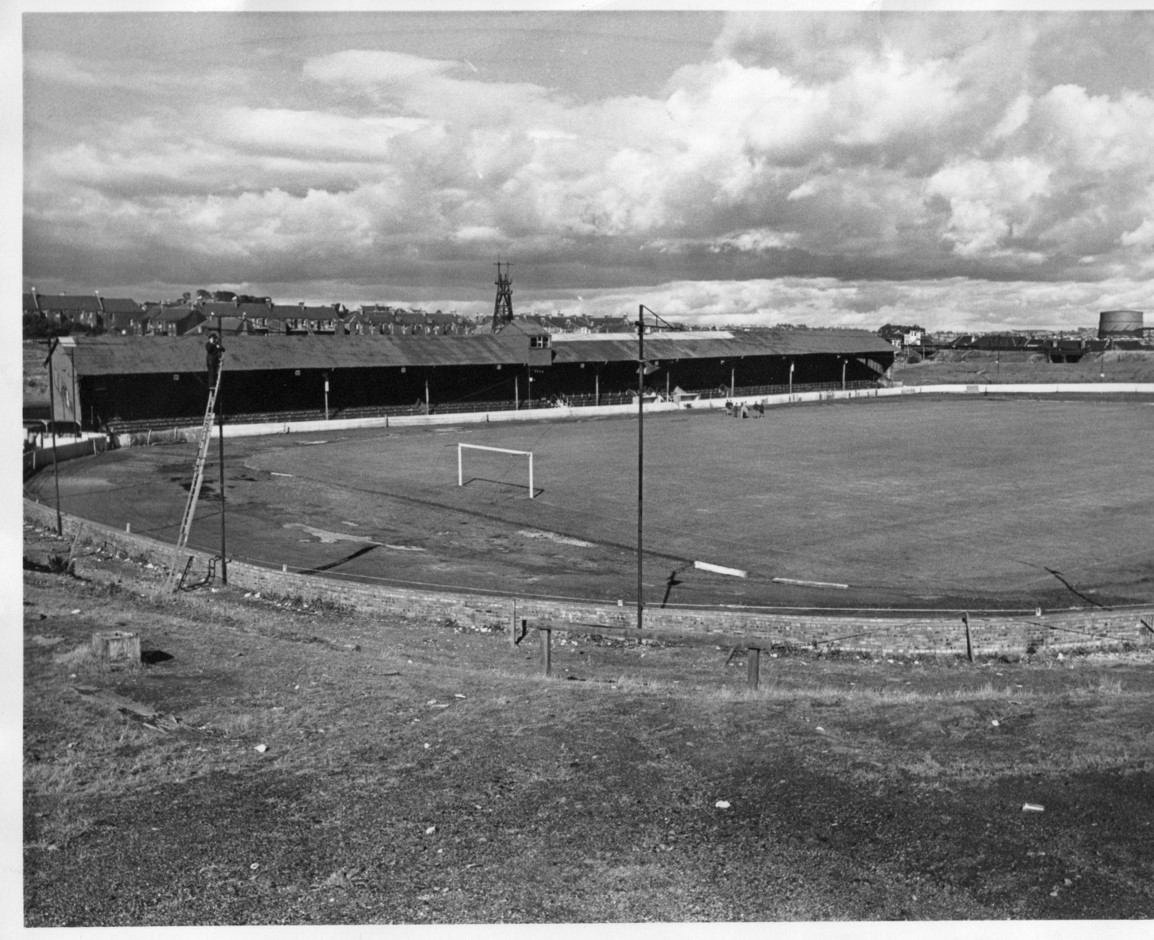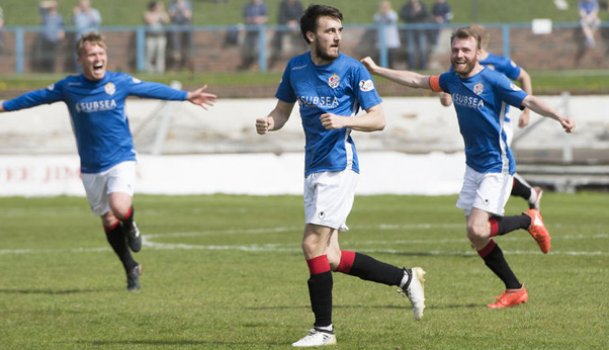
 






.gif)



|
Signature Sponsor


By Ron Ferguson
May 20, 2018 - After Cowdenbeath FC’S ambitious step up to the Scottish League’s new Second Division in 1905, an additional source of income was required, and it came from another traditional sport of the miners - greyhound racing. When I was a boy, the sight of a miner walking along the road with his “whippet” was a very familiar one. The greyhound promoters leased Cowdenbeath’s North End park, and the annual rent helped keep the football club alive. The new financial security emboldened the club’s directors to become even more ambitious and aim for the Scottish League’s top bracket – the First Division.
In 1924, a year after opening their brand new 3,500-seater stand in the center of Cowdenbeath and right next to the No. 7 Pit, The Miners won promotion to the First Division. With the coal industry doing well and the football team competing successfully in the top league, the winning of promotion began a decade of unparalleled success. There was no doubt at all that the expansion of the coal industry not only brought prosperity to the town, but also gave new energy to the football club. It was the Golden Era of Cowdenbeath FC.
Cowdenbeath FC at Central Park with Cowdenbeath No. 7 Pit in the Background
Cowdenbeath No. 7 Pit
In their first season in the elite league, “The Miners” finished just behind Celtic FC. Not bad for a club from what not so long ago had been an agricultural settlement that hardly figured on the map. The football team feared no club in the top league, and it was no surprise when some of their best players caught the attention of bigger clubs in England. Full back Bill Murray was transferred to Sunderland for £8,000 – a huge transfer fee for those days - and goalkeeper Bob Middleton became the first Cowdenbeath player to be capped for Scotland.
Despite losing some of their best players and sometimes losing top league status, Cowdenbeath FC continued over the next few years to mix with the “big boys”. Let me give one illustration. On September 21, 1949, I was part of Cowdenbeath’s biggest-ever crowd of 25,586, to watch The Miners play Rangers in the second leg of the quarter final of the Scottish League Cup. In the first leg in Glasgow, Cowdenbeath had faced one of the greatest-ever Rangers sides. Sports writers complained that such a mismatch should not be allowed. Rangers must have wished it hadn’t been allowed, because Cowdenbeath beat Rangers by three goals to two, becoming the first Second Division club to go to fortress Ibrox and beat the mighty Rangers. Not only that, they did it with style.
At the end of the Ibrox match, Alex Menzies, Cowden’s heroic and fearless captain, had danced a Highland Fling in front of the baying Rangers fans. A boyhood hero of mine, “Big Ming”, a tough coal miner, would be prepared to die for the cause. He resolutely refused to acknowledge defeat even when it stared him in the face – and as a Cowdenbeath defender it stared him in the face often.
But I digress. With most people expecting a thrashing from the wounded Glasgow giants in the return match, upstarts Cowden had the audacity to take the lead in six minutes. The scorer? Big Ming, of course. Rangers pulled one back, making it 4-3. With only 13 seconds left, Cowden forward Frank Armstrong tried to beat Rangers captain George Young one more time. Alex Menzies shouted in a voice that could be heard throughout the ground, “Don’t try anything clever, Frank, just kick it down Number Seeven pit!” But George Young dispossessed Armstrong and lumped the ball forward into the Cowdenbeath penalty area. Rangers scored, taking the match into extra time. The part time Cowden players were exhausted, and Rangers scored the winner. It was the first time I had seen grown men - tough miners - cry in public.
Maybe that defeat was a portent of things to come. Slowly but inexorably, things were changing in the coal industry in Fife. The once-vibrant coal business was contracting. The inevitable convulsions would change the dynamics of the town of Cowdenbeath.
Cowdenbeath FC Players Celebrate Their Great Win
A constant theme in this series of articles has been the profoundly close relationship between the fortunes of the coal industry and the fortunes of its famous football club. So how did the economic changes in coal mining affect its football club? Can The Miners survive? I will address these questions in the next, and final, article.
(Editor’s Note: This is the fourth in a series of articles about Cowdenbeath FC, the home of “The Miners”, located in Fife, Scotland, who are seeking support from members of the United States coal industry. Ron Ferguson’s story of Coal, Football and the Community will continue in a future article.)
For more information on Club 135, please click here.
To make a donation, please click here.
CoalZoom.com - Your Foremost Source for Coal News |
 











|

.jpg)

.png)